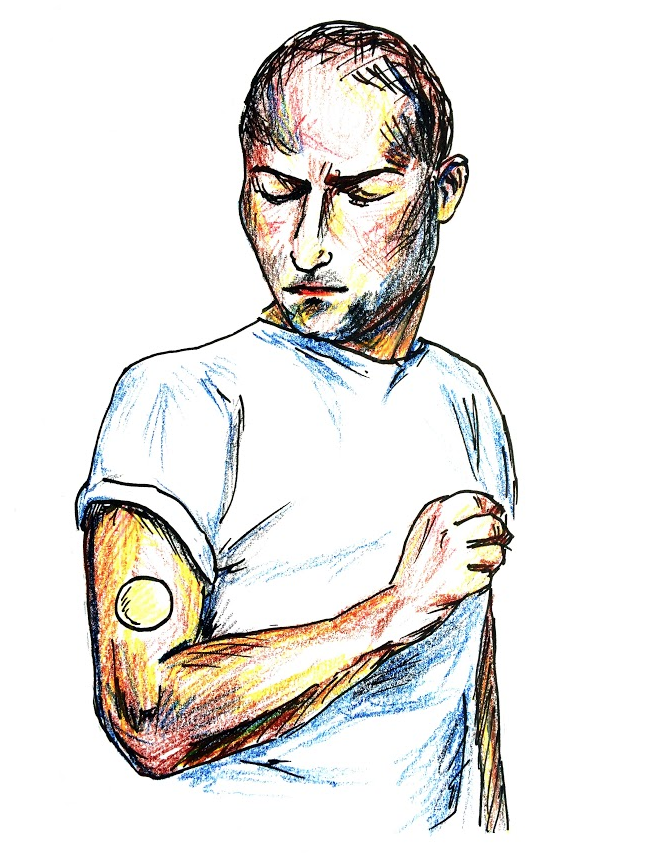
For many people, the word nicotine conjures an image of a toxic and addictive drug — the key component of tobacco. The Yale School of Medicine, however, is rewriting nicotine’s unfavorable reputation.
This spring, Yale published two papers: one demonstrating that nicotine reduces aggression in three different types of mouse, and another finding that transdermal nicotine patches — those placed on the skin’s surface — alleviate aggression common in patients suffering from autism spectrum disorders. According to Gerrit I. van Schalkwyk, clinical fellow at the Yale School of Medicine and coauthor of the second study, some parents who have heard rumors of nicotine’s beneficial side effects already use the drug to treat their children’s aggression, even though there is insufficient evidence to support the scientific claim. But with these two studies, the Yale researchers aimed to change that.
“I think it would be helpful to understand the relative risks and benefits [of such nicotine use] in a more scientific way,” van Schalkwyk said.
The researchers conducted a “resident-intruder test” in which an intruding mouse was placed in a resident mouse’s home cage for a fixed time interval. The study measured the time it took for the resident mouse to make the first attack against the intruder as well as recording the total number of attacks made throughout the intrusion interval. The researchers also analyzed nicotine’s effects on locomotion and sociability along with mouse brain dissections and imaging.
In the human study, a transdermal nicotine patch was placed on an ASD patient when doctors suspected an act of aggression was imminent. The severity of patient’s aggressive behavior was quantified by the number of four-point restraints and physical holds needed to subdue the patient’s aggression. Researchers compared the frequency of such restraints and holds when the patches were and were not in use.
In describing the connection between the two papers, van Schalkwyk explained that basic scientific data concerning nicotine’s effects on mice paved the way for deeper analysis of the drug’s effects on human behavior.
But according to Charles Nelson, pediatrics and neuroscience professor at Harvard University, extending the implications of the findings to humans is complicated for three primary reasons.
First, scientists have identified various and distinct forms of human aggression, which are likely associated with different neurobiological mechanisms, Nelson said. This is not the case with mice, Nelson added.
“Thus, whether nicotine administration would impact all or only some forms of human aggression is open to debate,” Nelson said.
Additionally, humans differ from mice in that they have large prefrontal cortexes, giving humans the ability to moderate displays of aggression, he added.
And there is also the practical concern that nicotine as a drug is potentially neurotoxic, Nelson said.
“Perhaps in severe cases of self-injury, [medicating with nicotine] might be appropriate, but I doubt one would want to start medicating boys who act out in preschool with nicotine,” he said.
Alan S. Lewis, who coauthored both papers, said nicotine patches are a viable form of medication because they do not lead to addiction.
Lewis said that he and his colleagues concluded wholeheartedly after reading the literature that using transdermal nicotine patches will not lead people to start to smoke.
The addictive quality of nicotine is at least partially contingent on the means by which the drug is administered, both Lewis and van Schalkwyk explained. When using cigarettes, nicotine is delivered rapidly and efficiently to the brain whereas the transdermal nicotine patches used in Yale’s experiment released the drug slowly into the blood stream. For this reason, previous studies looking at the cognitive effects of long-term nicotine administration have generally reported no signs of nicotine addiction in their subjects. Moreover, those with ASD are much less likely to smoke cigarettes than the general population because their health tends to be more closely monitored by others.
William Findley, doctor of physiology and neuroscience, critiqued these findings, arguing that the statistics in the paper concerning mice are not convincingly analyzed. The analysis could be improved upon by an inclusion of different regression models, he said. Findley also noted that the findings on mice are not statistically significant under more conservative models.
Findley then emphasized that the human experimentation looked only at one patient, meaning it does not constitute a “scientific finding,” but rather renders the experiment a “case study.”
“Case studies are neat inspirations for science, but are not general scientific knowledge in-and-of themselves,” he said.
Lewis said Findley’s take on the human study is valid, although he does not consider it a criticism as much as a description of what a case report is. He added that while case reports do not prove anything in a scientific sense, they are valuable in that they can be used as springboards for more rigorous study. Lewis and van Schalkwyk said they hope to substantiate their findings by testing a greater number of human patients in a more controlled and systematic study.
Lewis said the reason that his case study only looked at one patient because it is difficult to obtain approval to use nicotine patches on humans.
“Although [transdermal nicotine] is FDA approved to treat smoking sensation in adults, we ethically can’t conduct a clinical trial on a number of patients without getting approval from Yale’s institutional review board,” Lewis said.
The particular patient examined in this report was unique in that he had been trialed on “almost every other medication” so his legal guardian approved its use after the risks and benefits were discussed, Lewis added.
According to the Center for Disease Control and Prevention, about 1 in 68 children has been identified with autism spectrum disorder.







